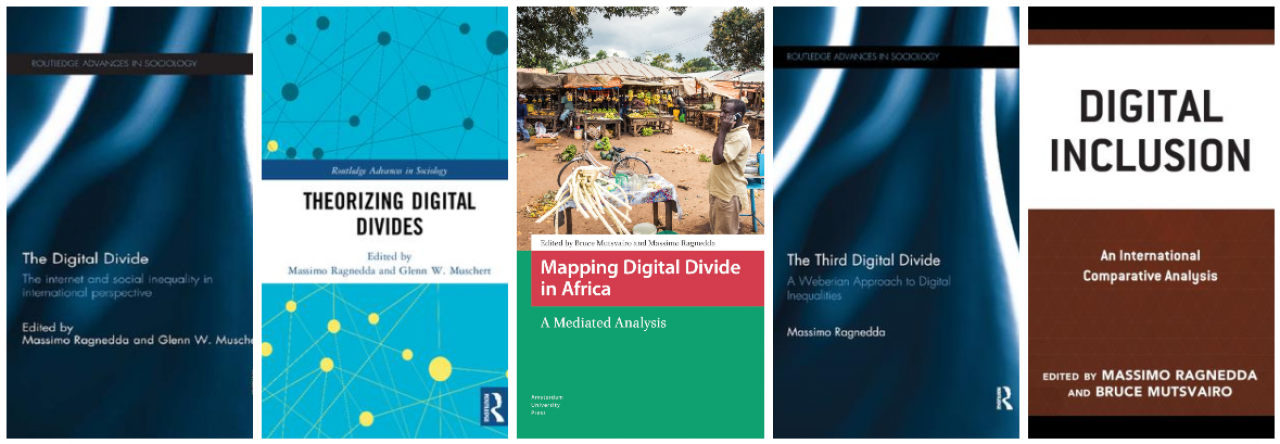Maria Laura Ruiu, Gabriele Ruiu and Massimo Ragnedda (2021) Conceptualizes the techno-environmental habitus, First Monday, 26(11). https://doi.org/10.5210/fm.v26i11.12353
This paper conceptualizes the techno-environmental habitus to explore differentiation among media users and their climate change awareness by adopting a dynamic concept that takes into consideration both pre-existing conditions and interactions with the technological field of action. The paper investigates the characteristics of multi-layered dispositions towards climate change in the U.K. through an online survey of a representative sample of the U.K. population (N=1,013). Results show that, despite the predominance of advocacy positions, four different techno-environmental habitus point to a fragmented landscape, but also a “chameleon”, transformative capacity of habitus, given that some common traits are shared by the groups. Beyond the four different patterns related to techno-environmental attitudes, one of the most interesting findings relates to the fatalistic techno-environmental habitus, which presents some traits in common with the scepticism and advocacy approaches but tends to be discouraged with regard to taking action. The identification of the nuances of techno-environmental habitus is relevant for climate change policy implementation because they may facilitate or hinder both individual and collective action.
This paper adopts the concept of habitus to interpret differentiation among technology users and their perception of climate change. The public disposition towards climate change is a relevant aspect of climate policy and is largely influenced by the use of news media (Schäfer and Painter, 2020). The originality of this work lies in exploring the interaction between techno-use and environmental dispositions, revealing different techno-environmental habitus, which may either facilitate or hinder both individual and collective sustainable actions.
Several studies in the U.K. have highlighted the persistence of scepticism around climate change and its multiple dimensions (in terms of existence, causes, consequences and actions needed) (European Perceptions of Climate Change Project [EPCC], 2017; Fisher, et al., 2018; Lorenzoni and Pidgeon, 2006; Poortinga, et al., 2011; Taylor, 2012; Whitmarsh, 2011). However, an increasing degree of acceptance of climate change has been observed to take place over time (Spence, et al., 2011). At the same time, opinion polls and the literature on the public perception of climate change show different levels of advocacy in the U.K., characterized by peaks and troughs (Capstick and Pidgeon, 2014; U.K. Department for Business, Energy & Industrial Strategy, 2013; Reser, et al., 2012; Stokes, et al., 2016; Taylor, et al., 2014; van der Linden, 2015). Despite an overall increase in the acceptance of climate change (Spence, et al., 2011), the U.K. still represents an interesting context due to the persistence of some resistance to belief in climate change-related risks (Fisher, et al., 2018; Poortinga, et al., 2011; Taylor, 2012; Whitmarsh, 2011). Moreover, as highlighted by Ruiu (2018), the relationship between the types of medium used and climate change perceptions still needs to be investigated. Previous studies showed that traditional mass media (television and newspapers and printed media) are fundamental sources of information about climate change (Schäfer, 2015; Schäfer and Painter, 2020; Ruiz, et al., 2020). Moreover, an increasing number of studies have also shown that online debates about climate change have been flourishing thanks to social media and the increasing use of the Internet as a source for scientific information. The investigation of climate change discussions on social media has become a focus of studies on public understanding of climate change (Connor, et al., 2016; Holmberg and Hellsten, 2016, 2015; Pearce, et al., 2015; Porter and Hellsten, 2014; Spartz, et al., 2015; Vraga, et al., 2015; Veltri and Atanasova, 2015). Some studies highlighted that exposure to user-generated content does not necessarily produce significant effects on the perception of climate change (Porten-Cheé and Eilders, 2015; Schäfer, 2012). By contrast, several studies found a link between people’s levels of awareness and engagement and their use of social media, thanks to the latters’ interactive character and the opportunity they offer for non-experts to express their opinions (Anderson, 2017; Boulianne, et al., 2020; Cody, et al., 2015; Mavrodieva, et al., 2019; Uldam and Askanius, 2013; Williams, et al., 2015). Thus, there is still a need to investigate how technologies interact with people’s environmental dispositions. This article investigates the characteristics of multi-layered dispositions towards climate change in the U.K. through an online survey of a representative sample of the U.K. population (1,013 respondents), which explores respondents’ use of media to search for information on climate change (both online and traditional media) and their climate perceptions. This study begins with explorative factor analysis (EFA) that, not surprisingly, indicates the emergence of two main factors related to climate change: “advocacy” positions (around 44 percent of the variance); and characteristics that can be associated with climate change “scepticism” opinions (around 18 percent of the variance). However, EFA shows that from the third factor onwards, the percentage of variation explained by additional factors is less than five percent, suggesting that between these two main factors, groupings are highly fragmented. For this reason, this work aims to further investigate potential nuances that might characterize intermediate positions between these two extremes. This will help to identify specific patterns of dispositions through the lens of a “techno-environmental” habitus. To shed light on the rise of the techno-environmental habitus, the article is structured as follows: the first section reviews the literature around technological habitus and environmental habitus and formulates the research hypotheses. The second section describes the methods used to analyse the data. The third section reports the findings and the fourth discusses the results. The final section presents the conclusions to be drawn from the study.


Lascia un commento